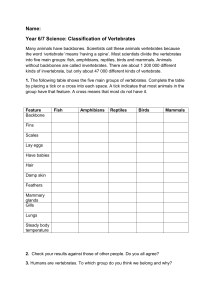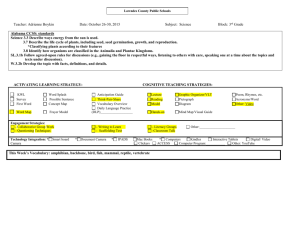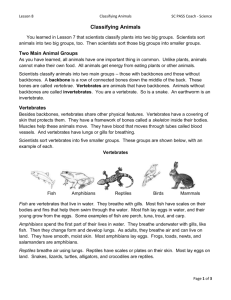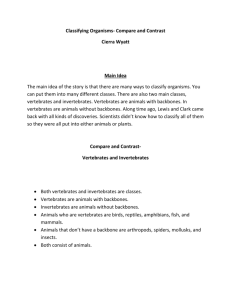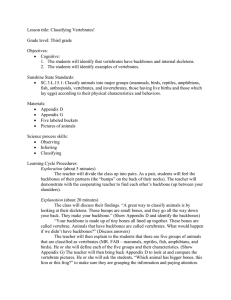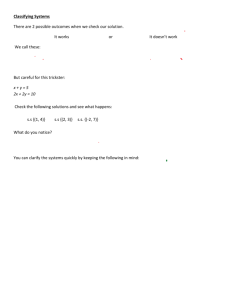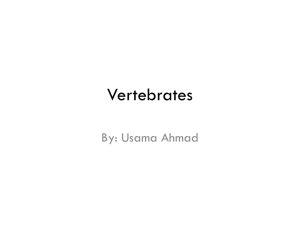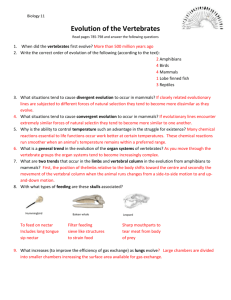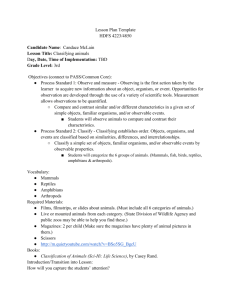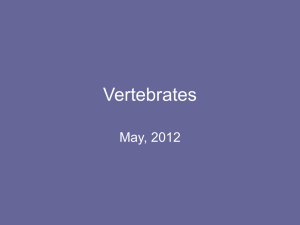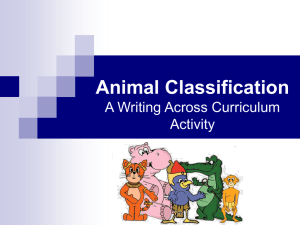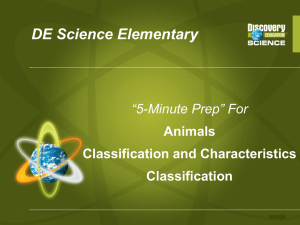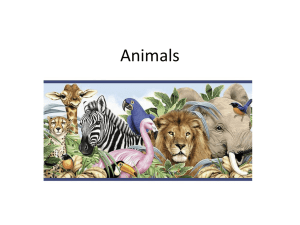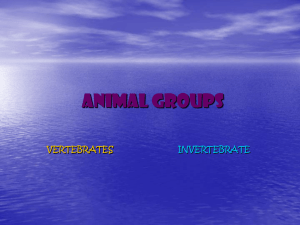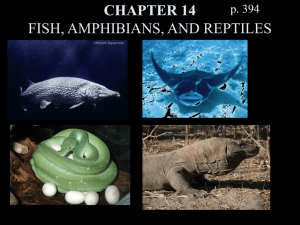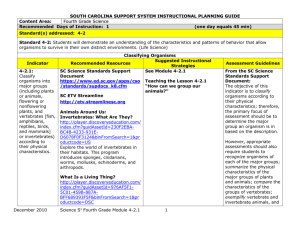Teacher: Date: Subject:
advertisement
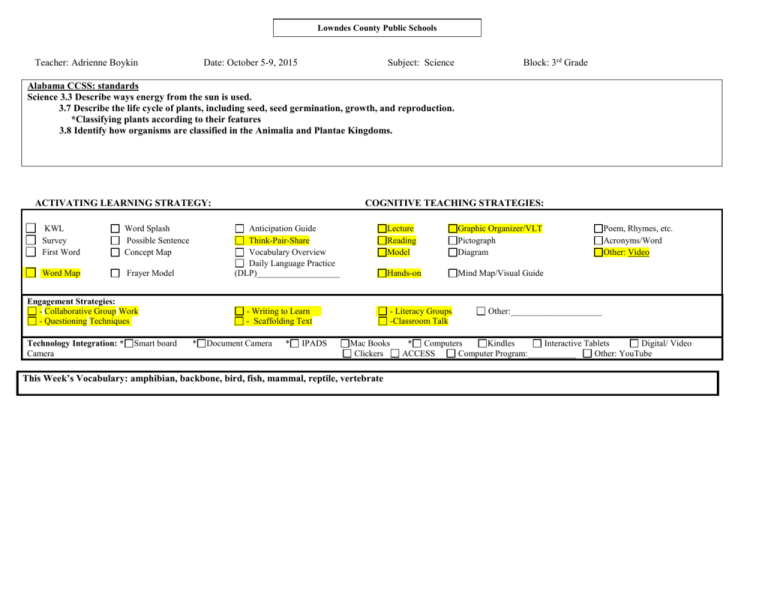
Lowndes County Public Schools LESSON PLANS Teacher: Adrienne Boykin Date: October 5-9, 2015 Subject: Science Block: 3rd Grade Alabama CCSS: standards Science 3.3 Describe ways energy from the sun is used. 3.7 Describe the life cycle of plants, including seed, seed germination, growth, and reproduction. *Classifying plants according to their features 3.8 Identify how organisms are classified in the Animalia and Plantae Kingdoms. ACTIVATING LEARNING STRATEGY: KWL Survey First Word Word Splash Possible Sentence Concept Map Word Map Frayer Model Anticipation Guide Think-Pair-Share Vocabulary Overview Daily Language Practice (DLP)___________________ Engagement Strategies: - Collaborative Group Work - Questioning Techniques Technology Integration: * Camera Smart board COGNITIVE TEACHING STRATEGIES: - Writing to Learn - Scaffolding Text * Document Camera * IPADS Lecture Reading Model Graphic Organizer/VLT Pictograph Diagram Hands-on Mind Map/Visual Guide - Literacy Groups -Classroom Talk Mac Books Clickers This Week’s Vocabulary: amphibian, backbone, bird, fish, mammal, reptile, vertebrate Poem, Rhymes, etc. Acronyms/Word Other: Video Other:_____________________ * Computers Kindles Interactive Tablets Digital/ Video ACCESS Computer Program:___________ Other: YouTube PROCEDURAL CONTENT (application) Chapter 2 Lesson 1 Essential Question Objective Preview (Before) Instruction (During) (After) Monday Day 1: How can we classify animals? Tuesday Day 2: How can we classify animals? Wednesday Day 3: How can we classify animals? Thursday Day 4: How can we classify animals? Friday Day 5: How can we classify animals? Students will model how backbones move. Students will classify vertebrates by their behaviors and physical traits. Students will compare characteristics of mammals, birds, fish, amphibians, and reptiles. Students will model how backbones move. Students will classify vertebrates by their behaviors and physical traits. Students will compare characteristics of mammals, birds, fish, amphibians, and reptiles. Students will model how backbones move. Students will classify vertebrates by their behaviors and physical traits. Students will compare characteristics of mammals, birds, fish, amphibians, and reptiles. Students will model how backbones move. Students will classify vertebrates by their behaviors and physical traits. Students will compare characteristics of mammals, birds, fish, amphibians, and reptiles. Students will model how backbones move. Students will classify vertebrates by their behaviors and physical traits. Students will compare characteristics of mammals, birds, fish, amphibians, and reptiles. Access Prior Knowledge KWL Chart (animals with vertebrates) Animal Groups Video Introduce vocabulary Types of Animals Video Turn and Talk (Essential Question) KWL Chart (What Have We Learned So Far) KWL Chart (What We Learned) Think, Pair, Share Vocabulary Review Animal Groups Video (Grand Conversation) Choral Reading/ Close Reading, “Classifying Vertebrates” ( words in context) pp. A36-A37 Classifying Animals Graphic Organizer Continue Choral Read/ Close Reading pp. A38-A39 Ask and Answer Questions Continue Close Reading pp. 40-42 Ask and Answer Questions Wrap Up Reading Types of Animals Graphic Organizer Cooperative Groups (Ask and Answer Questions; study guides) Study Guides Review Questions p. A43 Ask and Answer Questions Model a Backbone p. A35 Extension/ Refining Complete Backbones Homework Classifying Animals Worksheet Assessment (formal or informal): * class work notebook * homework Classifying Animals Worksheet quizzes tests Classifying Animals Worksheet computer activities collaborative work project based Other:___ Summarizing: 3-2-1 * Ticket out the Door The Important Thing Cue Cards * Teacher Questions * Student Summary Other: ____________________
